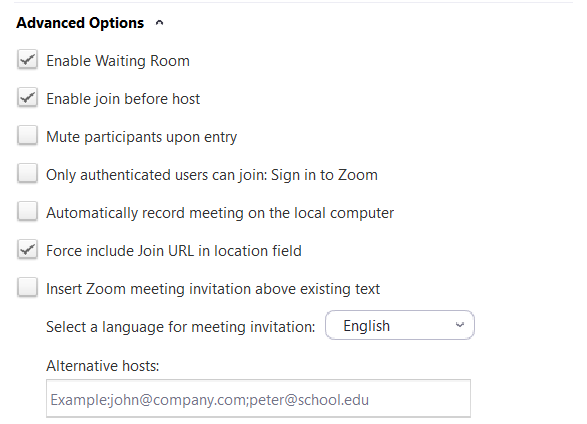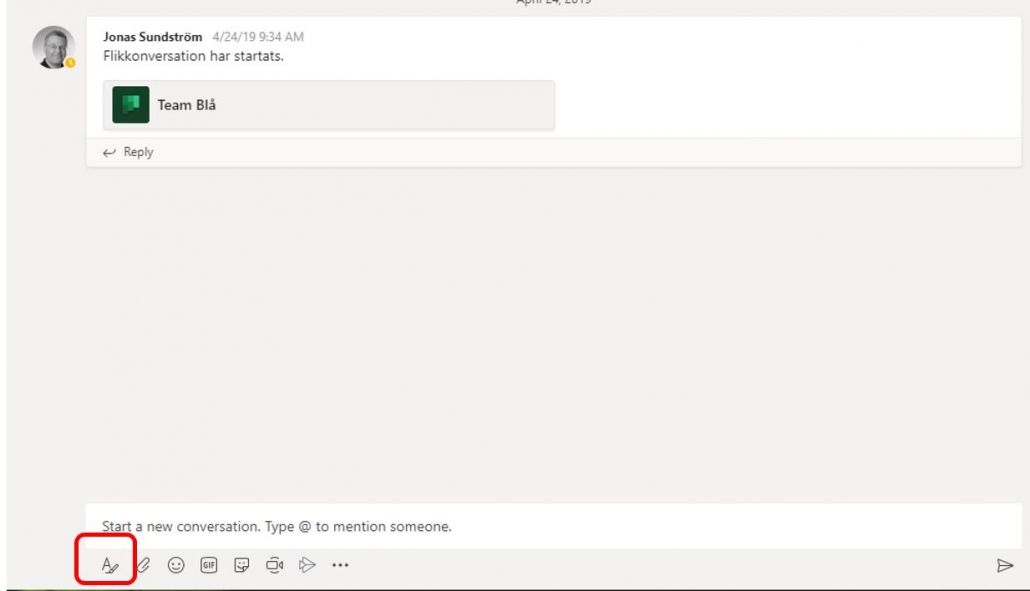Instructions for an online defence of doctoral thesis (PDF)
These instructions concerns Triple Helix and Aula Biologica.
Preparations for an online defence of doctoral thesis
Select an alternative host
Make sure there is a person on site during your online defence who can moderate and administer the meeting. Selecting an alternative host is a way to make sure that the online defence of your doctoral thesis can be carried out with fewer disruptions. The alternative host can, for example, moderate the chat, turn off the microphone and camera of participants or remove disturbing participants.
Decide which online service to use
In Triple Helix, you have three online services available that are suitable for online defences of doctoral theses: Zoom, Teams and Starleaf. In the list below you can see an overview of the different services.
Functionality in Zoom and Teams
|
Zoom |
Teams |
|
| Hold an audio and video meeting |
x |
x |
|
| Chat |
x |
x |
|
| Show a presentation/share a screen |
x |
x |
|
| Share documents during a meeting |
x |
x |
|
| Manage participants during an ongoing meeting |
x |
x |
|
| Allow active participation |
x |
x |
|
| Record meeting |
x |
x |
|
| Control who accesses the meeting |
x |
x |
|
| Maximum number of participants |
500 |
10000 |
|
| Maximum number of streamed videos |
49 |
49 |
|
| Dial-in allowed |
x |
x |
|
Book your defence of the doctoral thesis in two services
Once you have chosen a service, it is time to book your defence of the doctoral thesis. We recommend that you book with two different services – a primary and a secondary service. This is to make sure that the meeting an be carried out even if one of the services for some reason malfunctions.
For Teams and Zoom, you can create a meeting yourself using your chose service.
Create your digital meeting and managing a waiting room
When using Zoom and Teams, there is a feature for having a digital waiting room for the participants. The digital waiting room can be used for the participants to make sure technology will cope but also to keep track of who has joined the meeting. As a host, you can manually allow participants to join the meeting one by one or let everyone in at once.
You can also post a personal note to all participants in the waiting room containing for instance a description of the agenda for the defence of the thesis or guidelines for audience participation.
Set up a Zoom meeting
Book a meeting in Zoom, Manual
We recommend that you use a waiting room when creating your meeting in Zoom instead of using a password. If you choose to use a waiting room you can also choose Enable join before host, to let the participants connect before you – to be able to test their technology in the waiting room. You can find the setting under Advanced options.
You can also choose if you want the participants’ microphones to be muted when they join the meeting. This option minimizes interference, for example if someone connects late.

Set up a Teams meeting
Book a meeting in Teams, Microsoft
When you set up a meeting in Teams with Outlook, you can change your meeting options by clicking the cogwheel symbol. Options can be changed after this, for example before your meeting.
Change an already booked meeting’s settings
- Go to your Outlook booking and, double-click the calendar event to see details of the meeting.
- Below the link to join the meeting you will find a link labelled Meeting options (Mötesalternativ). Click the link.
You will be shown a view with further settings:
- Who can bypass the lobby? (Vilka kan gå förbi lobbyn?) There are a few options.
- Allowing dial-in users to bypass the lobby should always be set to No.
- Notify the host when a dial-in user leaves the meeting – tick “Yes” if you want to hear a signal each time a participant leaves or joins the meeting.
- Who can share their screen? A recommendation is to allow at least a chairperson or host to share their screen beside you. Choose by inviting people into the meeting and choose their names in the list. There are four options:
- Everyone
- Everyone in my organisation
- Some individuals
- Only me.
- You can then choose whether the participants should be allowed to activate their microphone and camera, whether the chat should be activated and whether the participants can use reactions, for example raising their hands.
- Note, if you select No on the option to allow microphone and camera, the participants will not be able to activate these during the meeting. However, you can activate them for the participants or change this setting afterwards.


Provide information about the defence of the doctoral thesis and share links
Wherever you publish information about your public defence of the doctoral thesis, you must also include the links to the meeting. This because defences of theses are public events that must be open to the public, even if they take place online.
You must also state which online service is primary and which online service is secondary.
Give your audience a few advice in your invitation
To create good conditions for your online defence of doctoral thesis, it can be a good idea to send your participants som advice when you publish your invitation. For example:
- Ask your participants to download the software necessary for participation in the meeting.
- Ask your participants to join the meeting through the assigned services no later than 10–15 minutes prior to the start of the defence so that everyone has time to check their internet connection and technology before the event starts.
- Ask participants to turn off their microphones and video when joining the meeting to minimize the risk of unintentional interference. The microphone can be activated later if they want to ask questions or interact in another way.
- Encourage participants to activate their video when they connect if the bandwidth allows it.
Check out your booked room
A dew days before the meeting, check the room and the technology a couple of days before the meeting to make sure that all equipment is present and working properly.
Preparations for the online defence of the doctoral thesis
Schedule an hour before the meeting to make sure that all your technology and your digital meeting is working as intended. Use a local area network, i.e. a network cable, instead of wifi.
The Campus Services Office will always supply a technician onsite who will help you with the technology during the start of the meeting.
Start the online defence of the doctoral thesis about 15 minutes before the set time so that the audience can join in the waiting room and test their technology.
During the online defence of the doctoral thesis
Waiting room
Here you will find instructions on how to handle the waiting room once you are in the meeting. You can always go back and change the settings, even after the meeting has started.
Waiting room in Zoom
When someone has joined your waiting room and want to join the meeting, a pop-up box will appear at the bottom of the screen. You can choose to view the waiting room or let the participant join. Viewing the waiting room can be necessary if several people wish to join simultaneously. You can reach the waiting room via the icon labelled Participants.

Waiting room (lobby) in Teams
If you have set up a lobby, you will get a box in the middle of the screen that informs you of who wants to join the meeting. You can choose to approve or deny entry or go to the participant list at the top. This can be relevant if there are many people who wants to connect at the same time.

Manage participants
In all three online services the host can manage participants. This means that the host can turn off both microphones and videos for participants who has these turned on (if this disrupts the meeting). The host can also remove a participant if necessary. This option is found under Security in Zoom.
Depending on what setup you have for the online defence of the thesis, the host may need to keep an eye on the chat in case the audience wants to ask questions. Both Zoom and Teams also offers an option to raise your hand, or to contribute with reactions.
Any questions?
Please contact Servicedesk or Infocenter so we can help you with the online solutions.























